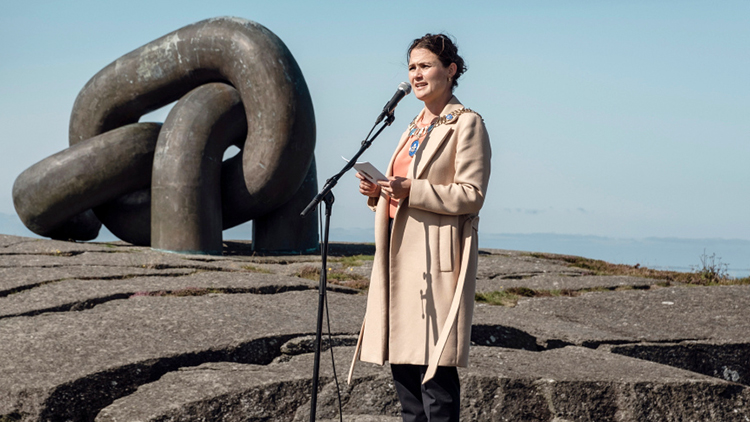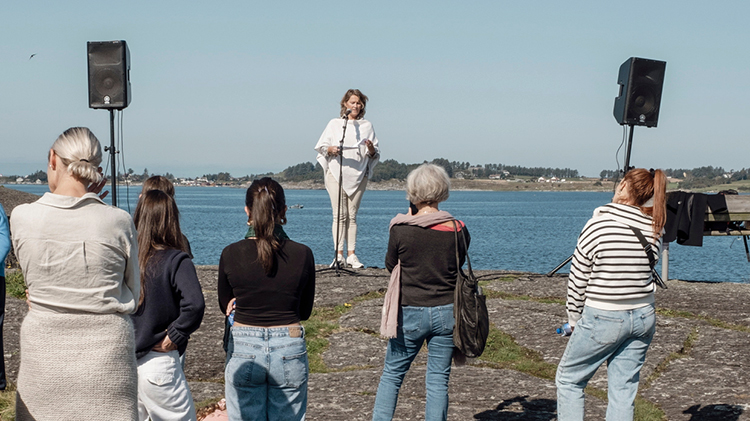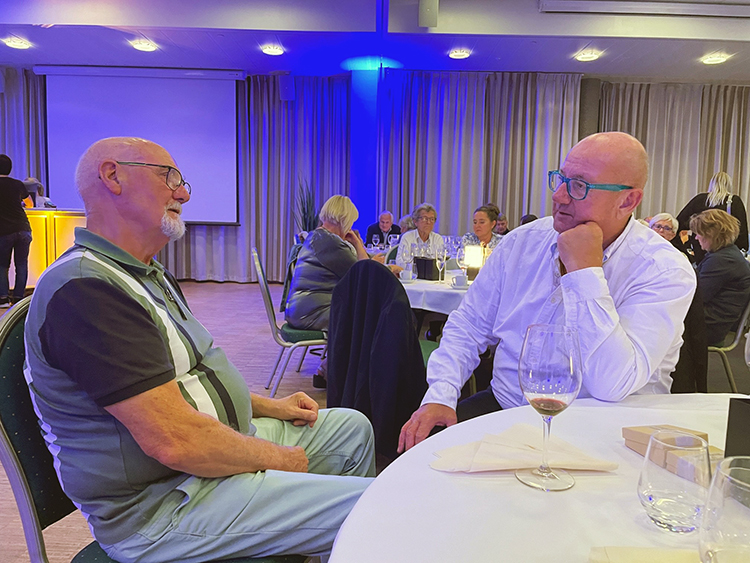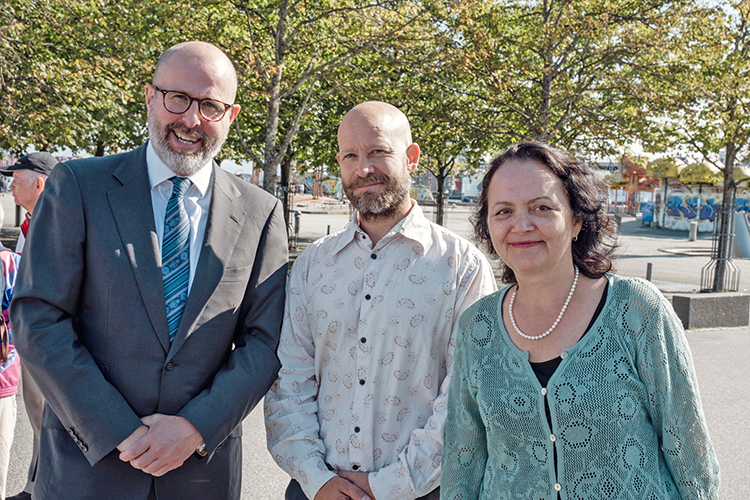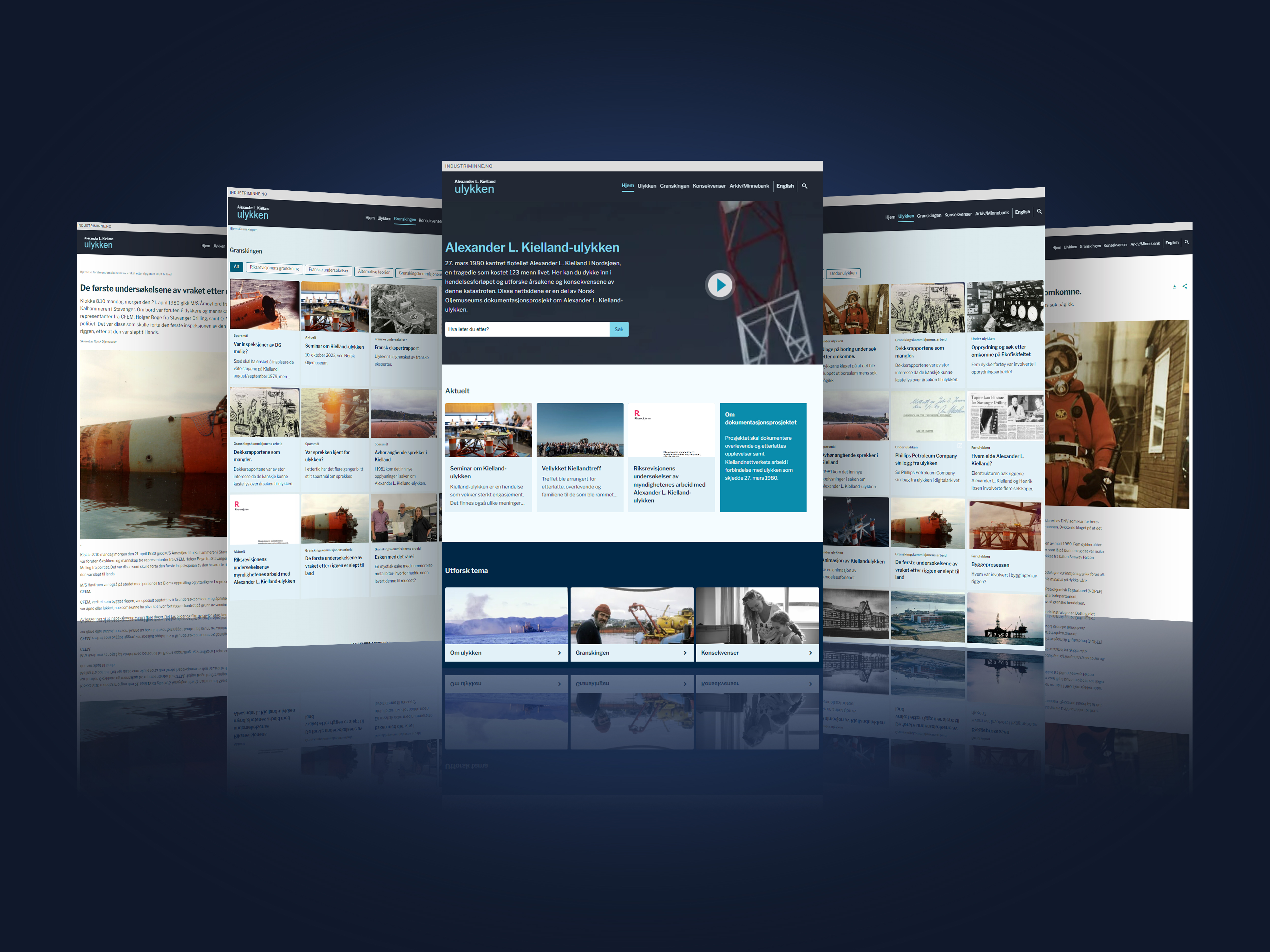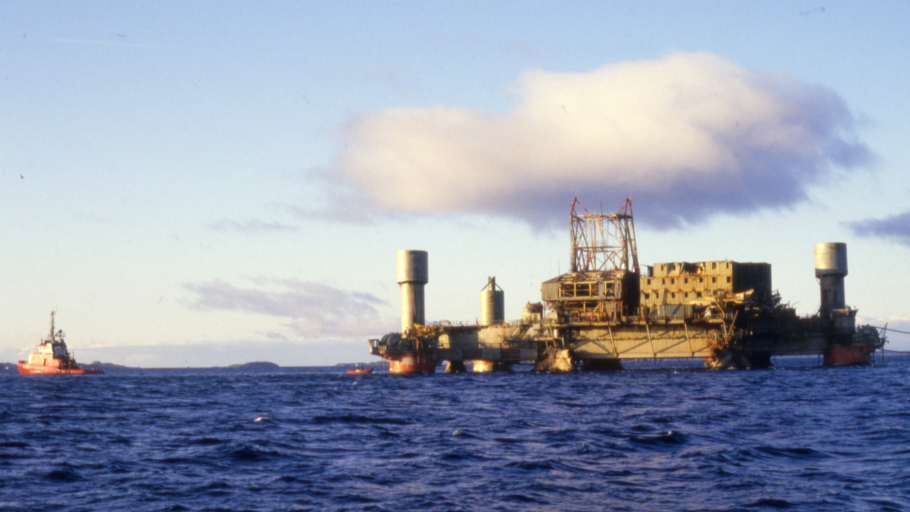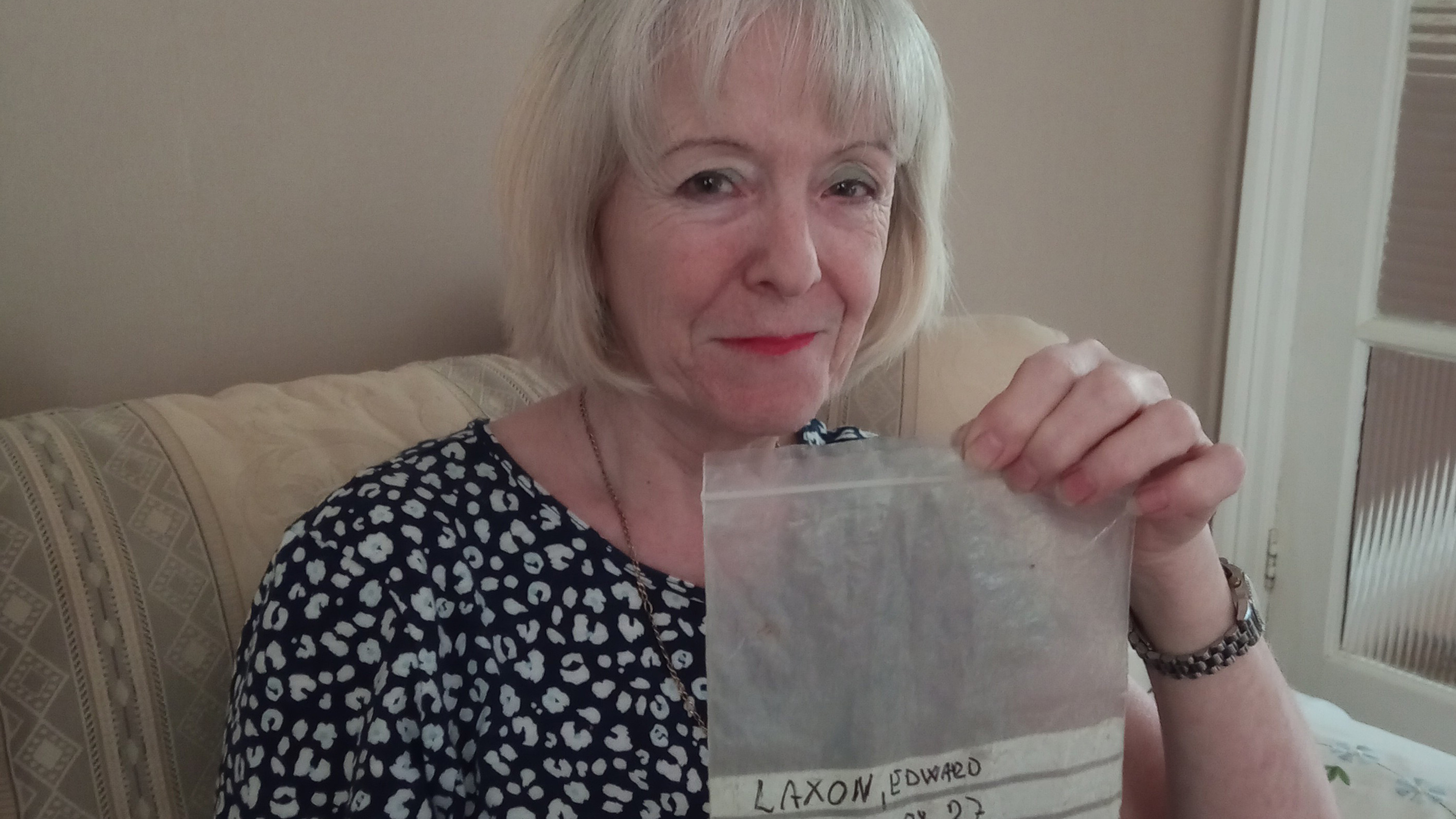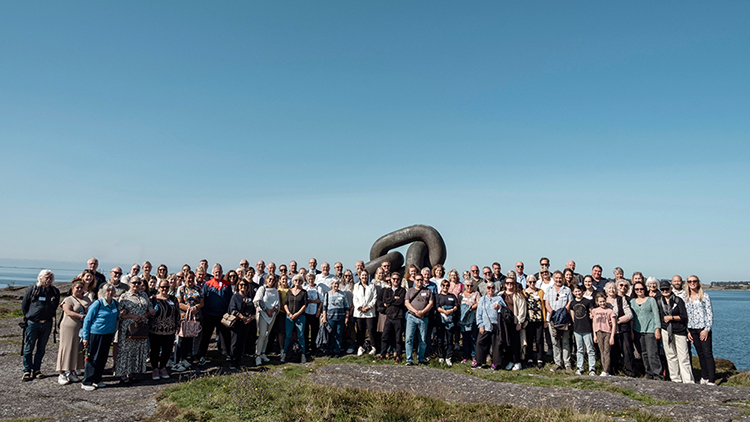
The Kielland meeting brought together around 100 participants. Here they are gathered at the Alexander L. Kielland monument “Broken link” at Smiodden in Tananger. (Photo: Rune Egenes/Norwegian Oil Museum)
The meeting was organized for next-of-kin, survivors and the families of those affected by the Alexander L. Kielland accident. The meeting took place from 31 August to 2 September. It was organized by the Norwegian Petroleum Museum as part of the ongoing documentation project about the accident, in collaboration with the Kielland network.
During the opening, mayor Tom Henning Slethei in the Sola municipality emphasized the importance of the Kielland event for both the participants themselves and the rest of us. It is about sharing experiences, maintaining a focus on HSE, preventing future disasters, and learning how to best support relatives and survivors in the event that a similar incident were to happen again.
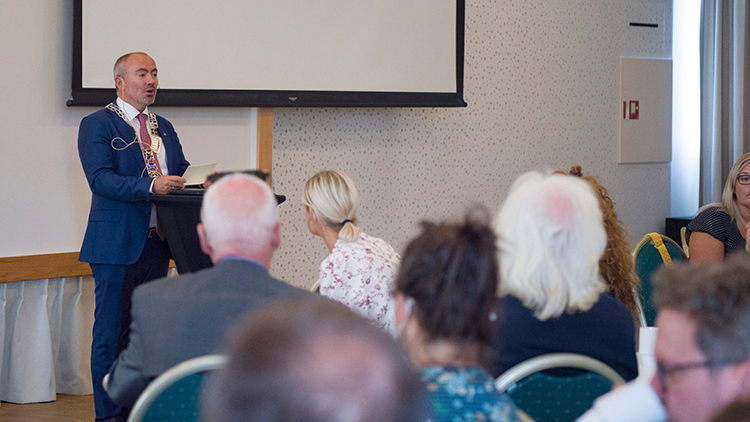
Similar gatherings have taken place in the past, but this was the first time survivors and relatives from other nations were invited. Among other things, there were many British citizens on Kielland, and 20 Britons died when the rig capsized.
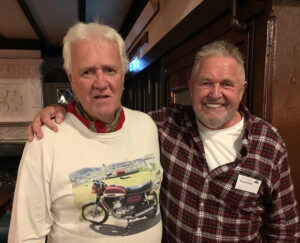 Bengt Berheim (right) finally got to thank his rescuer Roger Marcussen, who was a crane operator on the Edda platform and rescued him in a basket that was hoisted into the sea. (Photo: Else M. Tungland/Norwegian Petroleum Museum)
Bengt Berheim (right) finally got to thank his rescuer Roger Marcussen, who was a crane operator on the Edda platform and rescued him in a basket that was hoisted into the sea. (Photo: Else M. Tungland/Norwegian Petroleum Museum)
Ceremony
On 1 September, the participants visited the Norwegian Petroleum Museum before being taken by bus to Smiodden where there was a ceremony at the Broken link monument at Smiodden in Kvernevik.
During the ceremony, Stavanger’s mayor Kari Nessa Nordtun and John Fox, who is second in command at the British embassy in Oslo, spoke among others.
Stavanger’s mayor Kari Nessa Nordtun, Stavanger, gave a speech during the ceremony. (Photo: Rune Egenes/Norwegian Petroleum Museum)
Mayor Nordtun said, among other things, that we cannot ignore the fact that the relatives and survivors of the accident did not receive the follow-up and support they deserved. The pain and trauma they carried was not adequately addressed.
She also extended warm greetings to the foreign relatives and survivors who attended, saying their presence underscores the international dimension of the Kielland tragedy.
John Fox said that the British Embassy is there to assist and answer questions if anyone needs their help.
Merete Haslund gave a speech as a representative of the next of kin during the ceremony. (Photo: Rune Egenes/Norwegian Oil Museum)
Contact
Last summer, the documentation project was two trips to Great Britain after it succeeded in getting in touch with several of the British survivors there and some of those who survived the accident. For most, this was the first time someone had asked them to tell about the accident.
There were many strong meetings and after our visit a group was spontaneously created on social media where the chat between them has continued ever since.
Auður Hansen throws a rose into the sea in memory of his father Herbert Hansen, from Iceland who died in the Kielland accident. (Photo: Gudny Hansen) 
In a report on the authorities’ work after the accident, the National Audit Office determined that the survivors had not received follow-up and that the follow-up the survivors received was not good enough.
“There is some of this that we try to remedy when we invite to Kielland meetings,” says project leader Else M. Tungland.
Meeting between John Aird and Anders Helliksen who were in a lifeboat 43 years ago. (Photo: Else M. Tungland/Norwegian Petroleum Museum)
About the project
In autumn 2021, the Norwegian Oil Museum was awarded NOK 8 million from the Ministry of Labor and Inclusion and the Ministry of Petroleum and Energy to carry out a three-year documentation project about the accident. The accident occurred on 27 March 1980. A total of 123 men died and 89 survived in the rig accident at the Edda platform on Ekofisk in the North Sea.
The project’s mandate is:
• To collect documentation and obtain and make available knowledge about the Alexander L. Kielland accident that can shed light on the case and form the basis for research projects, articles, exhibitions, books, cultural activities, etc.
• To help ensure that relatives, survivors and others affected after the accident feel seen, heard and taken seriously – and that, as far as possible, they get answers to questions.
John Fox, deputy commander at the British Embassy, together with curator and department head for documentation and research Björn Lindberg and project manager Else M. Tungland at the museum. (Photo: Rune Egenes/Norwegian Petroleum Museum)






